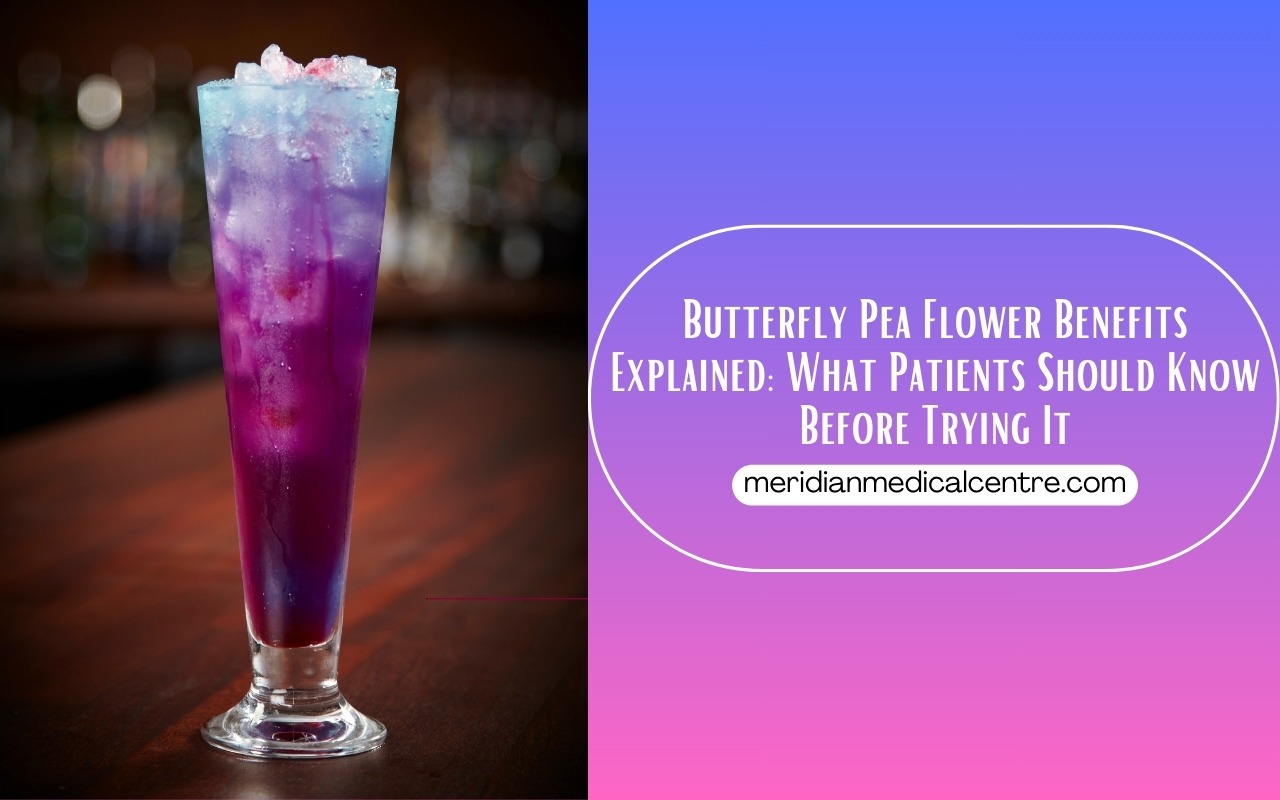
MeridianMedicalCentre.com provides evidence-based, informative content on natural wellness approaches that complement clinical care. Our focus is on empowering individuals to make informed health choices, with content rooted in scientific research and professional expertise. While we recognize the role of holistic health solutions, we emphasize the importance of consulting healthcare professionals for personalized medical guidance. Our approach is ethical, transparent, and accessible, ensuring that readers receive trustworthy health information that integrates natural and clinical solutions for better health outcomes.
Understanding Butterfly Pea Flower: A Scientific Overview
Butterfly pea flower (Clitoria ternatea) has gained attention in both scientific research and wellness communities due to its rich antioxidant profile and potential neuroprotective properties. Traditionally used in herbal medicine, this vibrant blue flower is now being studied for its benefits in cognitive health, metabolic regulation, and inflammation reduction.
In this review, we explore the latest data-driven insights on the potential benefits of butterfly pea flower, examining its role in brain function, oxidative stress reduction, metabolic support, and dermatological applications.
Bioactive Compounds in Butterfly Pea Flower
Butterfly pea flower is rich in bioactive flavonoids and polyphenols, which contribute to its numerous health benefits. The key bioactive compounds include:
- Ternatins – Anthocyanins responsible for the flower’s blue pigmentation, shown to have anti-inflammatory and antioxidant properties.
- Kaempferol – A flavonoid linked to cancer cell suppression and cognitive enhancement through its ability to neutralize free radicals.
- p-Coumaric Acid – Known for antimicrobial and anti-inflammatory effects, which may help reduce the risk of chronic diseases.
- Delphinidin-3,5-glucoside – A polyphenol with potential immune-stimulating properties and possible effects on cancer cell apoptosis.
These compounds play a crucial role in reducing oxidative stress, a key factor in neurodegenerative diseases, metabolic disorders, and aging.
Neuroprotective Benefits and Cognitive Support
Emerging research suggests that butterfly pea flower may provide cognitive benefits through its neuroprotective effects. Studies indicate that it may:
- Enhance Memory and Learning – A study published in the Journal of Ethnopharmacology found that butterfly pea extract improved memory retention and learning in animal models.
- Reduce Neuroinflammation – Flavonoids in butterfly pea flower may inhibit pro-inflammatory markers, potentially preventing neurodegenerative conditions like Alzheimer’s disease.
- Support Neurogenesis – Certain compounds in butterfly pea flower may promote the growth of new neural connections, supporting long-term cognitive resilience.
While further human clinical trials are needed, early research suggests that butterfly pea flower could be a promising botanical for brain health.
Metabolic and Antioxidant Effects
Butterfly pea flower’s role in metabolic regulation has also been explored in clinical studies. Key findings include:
- Blood Sugar Stabilization – A study involving 15 healthy individuals found that butterfly pea flower extract lowered blood glucose levels and improved antioxidant status post-consumption.
- Anti-Obesity Properties – Test-tube studies suggest that butterfly pea extract may inhibit adipogenesis, the formation of fat cells, which may aid in weight management.
- Lipid Regulation – Animal studies indicate that butterfly pea extract may help reduce cholesterol levels by improving lipid metabolism and reducing oxidative stress.
These findings suggest a potential role in managing metabolic disorders, including type 2 diabetes and obesity.
Anti-Inflammatory and Skin Health Benefits
Butterfly pea flower is increasingly being used in dermatological applications due to its anti-inflammatory and skin-enhancing properties. Studies highlight its potential to:
- Increase Skin Hydration – A 2021 study found that topical application of butterfly pea extract boosted skin hydration levels by 70% within an hour.
- Promote Hair Growth – Animal studies indicate that butterfly pea extract stimulated hair follicle activity more effectively than minoxidil, a common hair loss treatment.
- Combat Oxidative Damage in Skin Cells – The high anthocyanin content helps protect against UV-induced skin damage and premature aging.
While its cosmetic applications continue to grow, more research is needed to validate these effects in human clinical trials.
Safety Considerations and Precautions
Butterfly pea flower is generally recognized as safe for consumption in moderate amounts. However, some anecdotal reports suggest that it may cause mild gastrointestinal discomfort, such as nausea or bloating, in sensitive individuals.
- Individuals on blood sugar-lowering medication should consult their healthcare provider before consuming butterfly pea flower, as it may enhance the effects of these drugs.
- Pregnant and breastfeeding individuals should exercise caution, as there is limited safety data available for these populations.
Overall, while the risk of adverse effects is minimal, individual tolerance may vary.
How to Incorporate Butterfly Pea Flower into Your Diet
Butterfly pea flower is versatile and can be added to various functional foods and beverages, including:
- Herbal Teas – Steep 1 teaspoon (4 grams) of dried butterfly pea flowers in hot water for 10–15 minutes.
- Smoothies and Lattes – Add a teaspoon of powdered butterfly pea flower to smoothies or plant-based lattes for a nutritional boost.
- Functional Foods – Use as a natural food dye for baked goods, rice dishes, and beverages.
- Cocktails and Mocktails – Mixologists often use butterfly pea flower for color-changing effects when combined with acidic ingredients like lemon juice.
Conclusion: A Promising Botanical for Health and Wellness
Butterfly pea flower is a potent source of antioxidants and bioactive compounds that may support cognitive function, metabolic health, and skin integrity. While further human studies are necessary, early research suggests that its neuroprotective and metabolic benefits could have broad clinical applications.
For those seeking natural ways to boost brain function, regulate blood sugar, and combat oxidative stress, butterfly pea flower presents a compelling, evidence-backed option. As scientific research continues, this vibrant botanical may emerge as a valuable addition to functional medicine and dietary supplementation.
At Meridian Medical Centre, we remain committed to providing transparent, science-backed health information. We encourage patients to consult healthcare professionals before integrating new botanical supplements into their health regimen, ensuring safe and informed wellness choices.